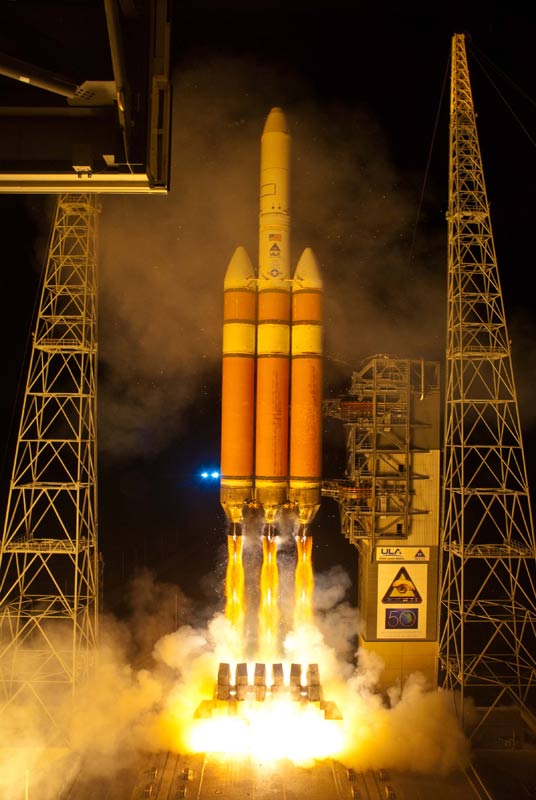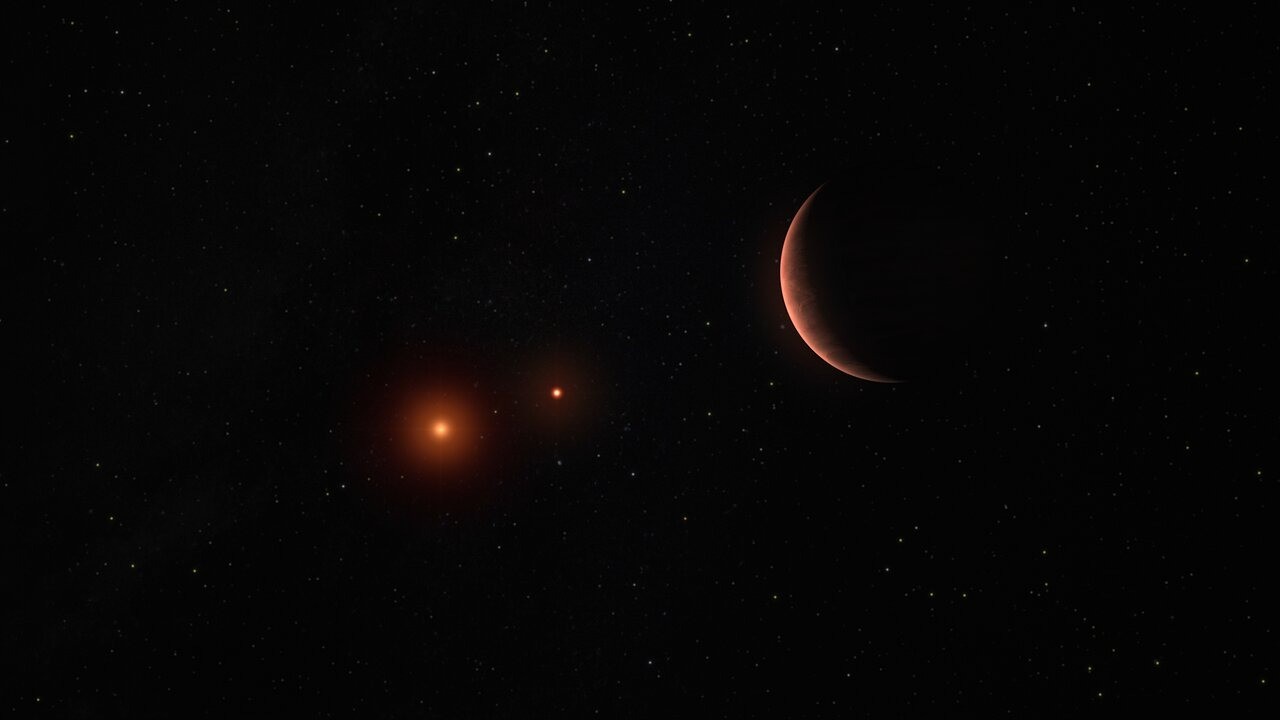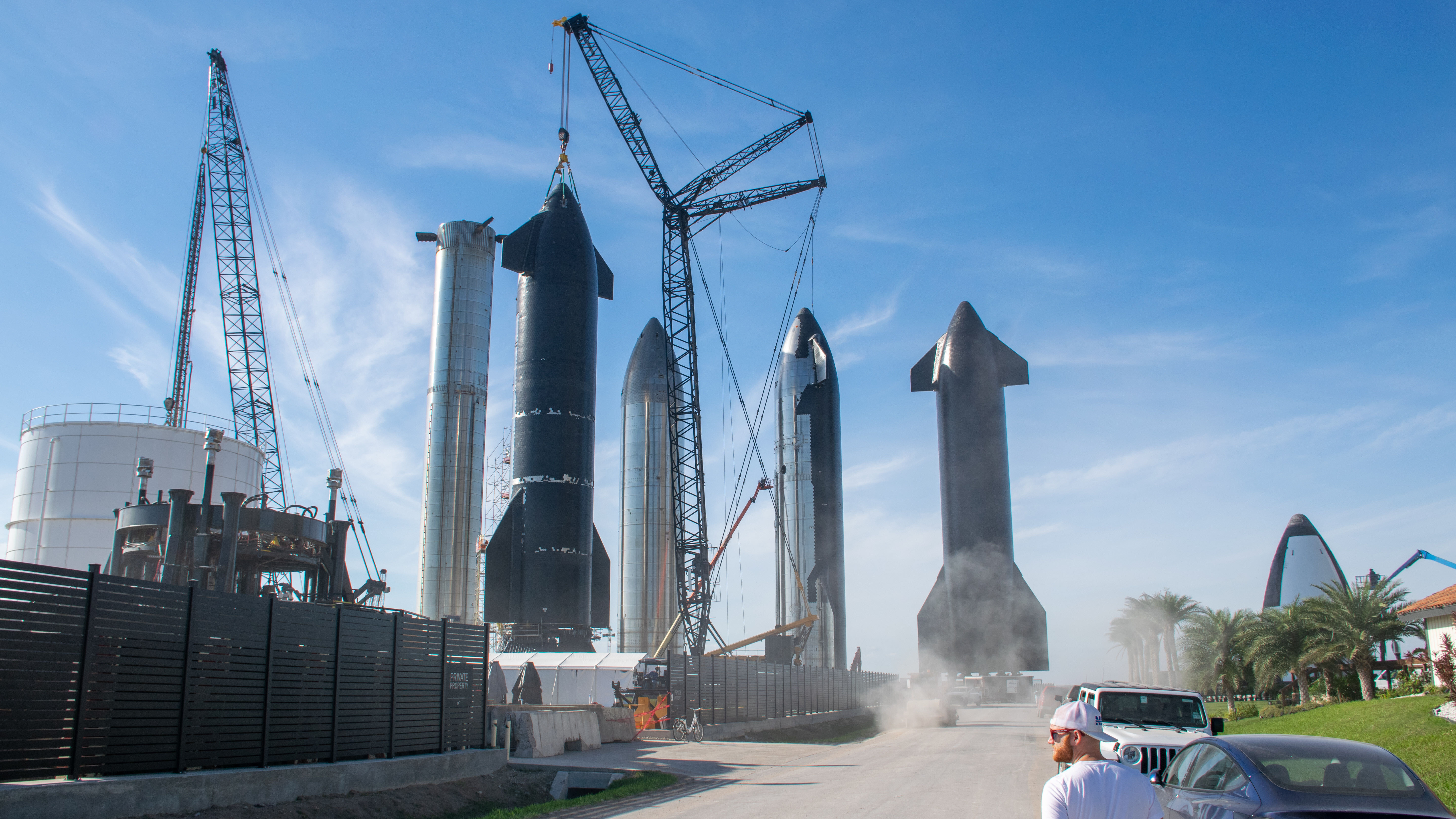Secret U.S. Spy Satellite Launches Into Orbit on Huge Rocket

This story was updated Nov. 22 at 1:28 p.m. ET.
A huge unmanned rocket carrying a secret new spysatellite for the United States roared into space Sunday (Nov. 21) to deliverwhat one reconnaissance official has touted as "the largest satellite inthe world" into orbit. ?
The giant booster ? a Delta 4 Heavy rocket ? blasted offat 5:58 p.m. EST (2258 GMT) from the Cape Canaveral Air Force Base in Floridacarrying a classified payload for the U.S. National Reconnaissance Office. [Photoof the spy satellite's dazzling night launch]
?This mission helps to ensure that vital NRO resourceswill continue to bolster our national defense,? said Air Force Brig. Gen. EdWilson, commander 45th Space Wing, after the successful launch.
The satellite, called NROL-32, launched after a series of delaysfrom technical glitches. The most recent glitch, a pair of faulty temperaturesensors, thwarted a Nov. 19 launch attempt.
The exact purpose of the new spysatellite NROL-32 is secret, but one NRO official has hinted at the hugesize of the reconnaissance spacecraft.
In a Sept. 13 address at the Air Force Association's Airand Space Conference, NRO director Bruce Carlson, a retired Air Force general,told an audience that this Delta 4 Heavy rocket would launch "with the largestsatellite in the world on it."
Get the Space.com Newsletter
Breaking space news, the latest updates on rocket launches, skywatching events and more!
For comparison, in July 2009 a satellite calledTerreStar-1 ? touted as the world's largest commercial satellite ever built ?launched into space atop an Ariane 5 rocket. TerreStar-1 is 15,233 pounds(6,910 kg) satellite equipped with a huge 60-foot (18-meter) antenna. Last week, the SkyTerra-1 mobile communications satellite launched with its own giant antenna, one that is about 72 feet (nearly 22 meters) across.
The Delta 4 Heavy rocket is the United States' biggestunmanned rocket currently in service and has 2 millions pounds of thrust, making it the most powerful liquid fueledbooster available today. A Delta 4 Heavy rocket stands 235 feet (72 meters) tall and is actually made up ofthree boosters, each called a Common Booster Core, arranged in a line to giveit a three-column appearance.
The rocket is built and launched by the United LaunchAlliance, a partnership between Lockheed Martin and Boeing. It made its firstflight in 2004 and is capable of launching payloads of up to 24 tons intolow-Earth orbit and 11 tons toward the geosynchronous orbits used bycommunications satellites.
Tonight's launch marked the fourth launch of a Delta 4 Heavy rocket and the second satellitelaunch in three months for the NRO. An Atlas 5 rocket launchedthe NROL-41 reconnaissance satellite on Sept. 20.
In his address last month, Carlson said that the currentplan for NRO satellite missions ?"is the most aggressive launch campaignthat the National Reconnaissance Office has had in 20 years, almost a quarterof a century."
Carlson went on to say that new satellites are vital forthe NRO's mission, and are needed to replace older satellites before they fail.
"Theother thing I can tell you is these are very important, because they all go toupdate a constellation which is aging rapidly," Carlson said last monthaccording to an NRO transcript. "We bought most of our satellites forthree, five, or eight years, and we?re keeping them on orbit for ten, twelve,and up to twenty years."
"Now when I buy something people complain about howexpensive it is, but nobody ever complains when it?s time to die and it keepsright on ticking," Carlson added. "Some of these guys are like theEnergizer bunny and they have really done marvelous work."
- Stunning Night Lights: Photos of New Spy Satellite's Launch
- Gallery - The Air Force's Secret X-37B Space Plane
- Most Destructive Space Weapons Concepts
Join our Space Forums to keep talking space on the latest missions, night sky and more! And if you have a news tip, correction or comment, let us know at: community@space.com.

Tariq is the Editor-in-Chief of Space.com and joined the team in 2001, first as an intern and staff writer, and later as an editor. He covers human spaceflight, exploration and space science, as well as skywatching and entertainment. He became Space.com's Managing Editor in 2009 and Editor-in-Chief in 2019. Before joining Space.com, Tariq was a staff reporter for The Los Angeles Times covering education and city beats in La Habra, Fullerton and Huntington Beach. In October 2022, Tariq received the Harry Kolcum Award for excellence in space reporting from the National Space Club Florida Committee. He is also an Eagle Scout (yes, he has the Space Exploration merit badge) and went to Space Camp four times as a kid and a fifth time as an adult. He has journalism degrees from the University of Southern California and New York University. You can find Tariq at Space.com and as the co-host to the This Week In Space podcast with space historian Rod Pyle on the TWiT network. To see his latest project, you can follow Tariq on Twitter @tariqjmalik.









